Nearly twenty years ago, then-FBI Director Louis Freeh –
still basking in his agency’s residual glory from the Mt. Carmel Massacre of April
1993 – visited
Moscow to sign a joint cooperation accord with the Russian Federal Security
Service (FSB). After touring the Lubyanka Square headquarters
of the Russian secret police, Freeh observed that “Our nations have more in
common than ever before.”
At the time I thought it was shocking that Freeh would
traduce his country, and his agency, by offering that comparison to the renamed
KGB. Roughly two decades later I’ve come to understand that if the comparison
is offensive, the Russians have the stronger claim to be the insulted party.
Like their Russian and Soviet siblings, the FBI’s primary
role is that of fabricating crimes in the service of the state. Since 1991 –
more particularly, since 2001 – the FBI has engaged in this behavior far more
extensively than the Russians, both in terms of the volume of fabrications and
the geographical reach of its operations. And evidence is accumulating that the
Bureau has added assassination to its proto-totalitarian toolkit.
In his study The Gulag
Archipelago, Alexandr Solzenitsyn records that “the creation of
fabricated cases began back in the early years of the Organs” – that is,
immediately after the Soviet secret police agency was created in 1917. The
routine fabrication of offenses was done by the Chekists “so that their constant
salutary activity might be perceived as essential. Otherwise, what with a
decline in the number of enemies, the Organs might, in a bad hour, have been
forced to wither away.”
From its inception, the Soviet secret police agency was
engaged in what we now call “Homeland Security Theater.” The same could be said
of the FBI, which
actually had a nine-year head start on its Soviet counterpart. J.
Edgar Hoover’s two chief priorities were the collection of what the Soviets
would call kompromat on
significant public figures – politicians, policy-makers, celebrities – and the
management of his secret police agency’s public image. With the advent of COINTELPRO in the
1950s, the FBI became fully engaged in a campaign of surveillance, harassment, disruption,
and assassination (if
only by proxy) targeting political dissidents. Since that time, the FBI has
been a fully realized political police organization, in every evil sense of
that expression.
Like their Chekist forebears, FBI Special Agents don’t solve
crimes; instead, they extract confessions through intimidation or blackmail.
Where confessions aren’t forthcoming, FBI interrogators will routinely deploy
the usefully ambiguous and self-ratifying charge of making a “materially false
statement to a federal agent” to punish those who refuse to submit.
Mind you, FBI agents – like
all other law enforcement personnel in the United States – are trained and
encouraged to lie as an “investigative” technique. They face no criminal,
civil, or administrative punishment for lying in the course of an
interrogation. Once again, they share this trait with their Soviet and Russian
kindred.
“We lambs are forbidden to lie, but the interrogator could
tell all the lies he felt like,” observed Solzhenitsyn. “Those articles of the
law did not apply to him…. He could confront us with as many documents as he
chose, bearing the forged signatures of our kinfolk and friends – and it would
be just a skillful interrogation technique” rather than a prosecutable
deception.
A victim who is manipulated, intimidated, and barraged with
unfamiliar and often contradictory details and accusations will inevitably say
something that could be considered incriminating – or that he might later
contradict in some trivial way. Those who are drawn into FBI interrogation
sessions suffer from an additional disadvantage: The Bureau’s inquisitors, as a
matter of inflexible policy, refuse to permit an objective record of their
investigative interviews.
“FBI agents always interview in pairs,” writes
the indispensable constitutional scholar Harvey Silverglate. “One agent asks
the questions, while the other writes up what is called a `form 302 report’
based on his notes. The 302 report, which the interviewee does not normally
see, becomes the official record of the exchange; any interview who contests
its accuracy risks prosecution for lying to a federal official, a felony. And
here is the key problem that throws the accuracy of all such statements and
reports into doubt: FBI agents almost never electronically record their
interrogations; to do so would be against written policy.”
A 2006 internal FBI memo obtained by the New York Times insisted that laying bare
the Bureau’s interrogation sessions to the unenlightened eyes and untutored
ears of the lay public would be an offense akin to tearing the veil away from
the Holy of Holies. The common public might mistakenly believe that “perfectly
lawful and acceptable interviewing techniques” may involve “unfair deceit,” and
question “the quality of evidence” produced thereby.
In the Stalin-era Soviet Union, Solzhenitsyn recalled,
victims of secret police interrogation would be handed a “206” form to sign
attesting to the accuracy of the official report, and the propriety of the
methods used to extract information during the session. Defense
Attorney Sam Fields points out that subjects of FBI interrogations – whether
they are potential witnesses or potential defendants -- will sometimes be given
a copy of the resulting 302 document prior to trial.
“If your interview lasted more than thirty seconds, it is
guaranteed you will find numerous discrepancies,” Fields advises us. “Some of
them will be insignificant; some of them could be material…. Whether or not the
`302’ discrepancies are a result of stupidity or cupidity makes no difference.
Testify in opposition to the `302’ and you are in the crosshairs of the Feds.
If they believe your testimony cost them the case, the next thing you [are]
likely to hear from the FBI will be: `Please place your hands behind your back.’”
Furthermore, as trial attorney Norm Pattis warns us, 302s
can be used to incriminate and convict defendants, but never to exonerate them.
In 2007, Pattis notes,
a federal prosecutor in Connecticut “moved in limine
to preclude the defense from using a 302 to impeach witnesses.” What that
meant, in substance, was that the US Attorney in that case admitted “that FBI
302s aren’t worth the paper they’re printed on” – unless, of course, they can
be used in a retaliatory prosecution of a witness or defendant who has somehow
thwarted a U.S. Attorney’s ambition, or frustrated an FBI agent.
Another Chekist-approved method favored by the contemporary
FBI is the entrapment of innocent people, either as a pure exercise in Homeland
Security Theater or in order to compel them to act as informants or
provocateurs. Over the past decade, this has become the FBI’s métier. The case
of Portland, Oregon resident Mohamed
Osman Mohamud is a museum-quality exhibit of the first approach. The Bureau’s
relentless harassment of Muslims at a mosque briefly attended by Mohamud offers
numerous examples of the latter tactic in action.
Mohamud’s
case has been previously examined in detail. Here’s a brief capsule
summary:
At age 18, as the Somali-born Portland resident got caught
in an undertow of jihadist radicalism, his father made the fatal error of
contacting the FBI to express concerns. The Bureau very thoughtfully braced the
young man with two of its “terrorism facilitators,” who took charge of the
young man’s indoctrination. Then they prevented him from flying to Alaska to
take a commercial fishing job.
After eliminating any possibility that this alienated young
man could have found a way to make an honest living, the FBI’s Homeland
Security Theater troupe played out the familiar script: They played to the
entirely justifiable outrage felt by this young man over the US government’s
treatment of Muslims in Somalia, then carefully manipulated him into pushing a
button on what he thought was a bomb at Portland’s 2010 Christmas tree lighting
ceremony.
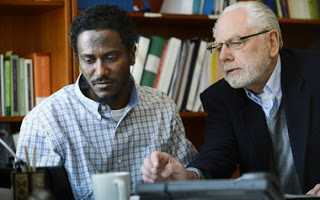 |
| Yonas Fikre (l.) with his attorney in Sweden. |
While one element of the Portland, Oregon FBI office was
targeting Mohamud, another was focusing its malign attention on a
young Eritrean-born man named Yonas Fikre, who, like Mohamud, had attended Portland’s
As-Saber mosque. In April 2010, Fikre traveled to Sudan, where he planned
to start a cell phone business. His first stop was at the US Consulate in
Khartoum, where a State Department representative advised him to file paperwork
for a Sudanese business license.
Shortly thereafter, Fikre received a phone call from a man
named David Noordeloos, who represented himself as an official at the embassy.
He told Fikre that he was one of several U.S. citizens in Sudan who had been
invited to a luncheon at the US Embassy the following day in order to receive a
briefing about safety concerns.
When Fikre showed up at the Embassy the following morning,
he was taken into a small room and held for interrogation by Noordeloos and another
man named Jason Dundas, who identified themselves as FBI Special Agents. Fikre
immediately demanded that he have access to his attorney before being
questioned. The FBI agents told him that he had been placed on the “no-fly list”
and thus couldn’t return to the United States in order to confer with his
attorney.
Leaving aside the fact that there is a common technology
called a “telephone” that would make the distances involved irrelevant, it’s
worth underscoring the fact that the FBI uses the “no-fly list” as a kind of
virtual Berlin Wall: The Bureau used it to trap Mohamud in the continental
U.S., so he could be indoctrinated by its terrorism facilitators, and they used
it to trap Fikre overseas so he couldn’t have access to his attorney.
During that April 22, 2010 conversation (appropriately
enough, it occurred on Lenin’s birthday), Noordeloos explained that the FBI
wanted to conscript Fikre as an informant within the As-Saber mosque. He
promised that he would be well-compensated to act as a stukach, that he
would enjoy “the good life” if he were to become a snitch. He also made it
plain that refusal to cooperate would have awful consequences.
“Don’t you love your wife?” Noordeloos asked ominously at
one point in the interrogation. (“One could break even a totally fearless
person through his concern for those he loved,” observed Solzhenitsyn of NKVD
interrogation techniques.)
Since Fikre couldn’t go back to the U.S., he was released
from the US Embassy. A few days later, he received an e-mail from Noordeloos
that said, among other things, that “The time to help yourself is now.”
Over the next two months, Fikre noticed that he was being
followed by plainclothes police. In June 2010 he left Sudan, eventually
arriving in the United Arab Emirates. A year later, after moving to the city of
Al Ain in Abu Dhabi, Fikre was kidnapped from his home by agents of the UAE
secret police, who blindfolded him and took him to a dungeon, where he was held
captive and tortured for 106 days.
The interrogators who tormented Fikre had been given
detailed information about him by the FBI, and repeatedly demanded that he
cooperate with the Bureau. When he resisted answering questions, or inquired as
to whether his jailers were working as proxies for the FBI, he was “repeatedly
beaten severely on his head, back, legs, and feet with plastic pipes, required
to assume stress positions for hours, and threatened with death by
strangulation by use of a flexible pipe,” Fikre recalls in a
recently filed lawsuit. “One particularly painful torture method his
interrogators used was to force plaintiff to lie on his stomach with his
sandals off, whereupon he was beaten severely on the soles of his feet;
thereafter, he was required to stand on his feet, which … caused him great
pain.”
One repeated line of inquiry dealt with Mohamed Osman
Mohamud – the 18-year-old from Portland who
had been lured into playing a leading role in a Homeland Security Theater
production. It is quite possible that the FBI was trying to torture Fikre into providing
“evidence” against their patsy, in the event that they confronted that rarest
of things, a conscientious federal jury.
In July 2011, Fikre’s family and friends, working through an
attorney, reported that he had gone missing and was likely in the custody of
the UAE secret police. A consulate employee made a perfunctory visit to his
cell, and concluded that the victim – who had dropped thirty pounds, and had
been told that he would be tortured to death if he revealed the abuse he had
received – was in “good shape.” The consulate representative was assured that
Fikre would be released “tomorrow.” He was held for another eight weeks. When
he went to the airport, Fikre was told that he was forbidden to return to the
U.S. because his name was still on the no-fly list. An involuntary exile, Fikre
was eventually offered political asylum by a relatively free country, Sweden.
Fikre was one of at least five men who attend the As-Saber
mosque whose names have been inscribed in what we could call the “Berlin Wall Registry”
– or what the Regime calls the “no-fly list.” None of them has been charged
with terrorism or related crimes. None has been told why he is on the list.
Among the other victims was Libyan-born
US citizen Jamal Tarhuni, who was kidnapped by the Feds in Tunis while
trying to return from a humanitarian trip to his war-afflicted homeland in
January 2012. Tarhuni had provided translation and consulting services on
behalf of a Christian charitable organization called Teams International. After
being told that his name was on the Berlin Wall Registry, he was drawn into a
protracted interrogation by a set of FBI agents under the lead of Special Agent
Brian Zinn.
In Tarhuni’s
case, the victim was told that he would be released if he took a polygraph
test. A female FBI agent requested that Tarhuni sign an electronic release form
on her computer. As he examined the document, Tarhuni realized that it was a
waiver of several constitutionally protected rights. He quite sensibly refused
to sign the form. As punishment, he was effectively imprisoned for three weeks
in Tunis before his Portland-based attorney, Thomas Nelson, was able to arrange
for him to fly home via Paris and Amsterdam.
Tarhuni was obviously more fortunate than Fikre, but they
both should regard themselves as blessed in light of the
FBI’s recent execution-style murder of Orlando resident Ibragim Todashev, a
Chechen-born acquaintance of alleged Boston Marathon bomber Tamerlan Tsarnaev.
Yes, this
was an extra-judicial murder. Todashev
was unarmed, surrounded by FBI agents, Massachusetts State Troopers, and
officers from the Orlando Police Department. The original story – ventilated by
an anonymous source to a credulous Regime-aligned news outlet -- was that Todashev,
who was supposedly prepared to confess involvement in an unsolved triple
murder, suddenly snapped and threatened the bold and valiant G-Men with a
knife. That story has since been “rectified”; the new version is that the
unarmed and outnumbered young man threatened the Chekists with
a metal rod – or perhaps
he threw a table at one of the interrogators -- and simply had to be gunned
down.
None of this would explain why there was a bullet entry
wound in the back of Todashev’s head,
a location suspiciously close to the spot preferred by the NKVD executioners
who fed condemned political prisoners a “Lubyanka breakfast” – that is, a
cigarette and a bullet to the back of the head.
That variety of lethal room service was a standard feature
of the basement cells of the facility toured by then-FBI Director Louis Freeh
on July 4, 1994, before he correctly observed that his agency and the one that
maintained that dungeon had “more in common than ever before.” Truer words have
rarely, if ever, departed the tax-devouring skull cave of a federal bureaucrat.
Dum spiro, pugno!

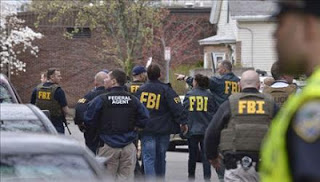
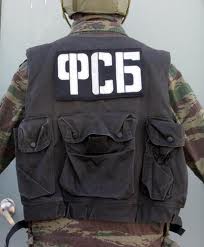


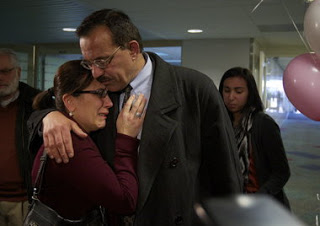
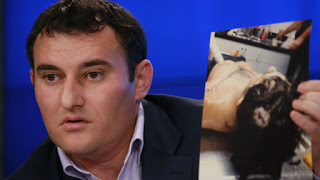
10 comments:
"In its potentiality, if not yet in its methods, is the FBI any different from the Gestapo? "
Frank Chodorov, On Saving The Country, 1945
That must have sounded pretty crazy when he wrote it.
Love this article. We need another 100 like it, exposing this gang known as the FBI.
====================
The FBI is an unaccountable, unconstitutional, criminal terrorist organization:
The FBI shot Vicky Weaver in the head while holding her baby at Ruby Ridge , their hit team chopped the hands and feet off of Gordon Kahl (while he was still alive), they participated in burning children to death at Waco, they threatened to kill police investigators families after the OK City bombing, and they tortured and murdered Kenneth Trentadue after the OK city bombing. They were also caught downloading child porn and no one was prosecuted. Look at who built the bomb in the 1993 World Trade Center bombing. Google FBI translator Sibel Edmonds who caught the FBI with prior knowledge of 911. The FBI has aslo been behind a slew of false flag bombings including the 1993 bombing of the World Trade Center. Look into the FBI involvement with the commitment and electro-shock treatment of Ernest Hemingway....
** And these terrorists are the people that decide if Americans can arm themselves. What is wrong with this picture?
Check these facts about the FBI they are ALL true
http://www.freedominourtime.blogspot.com/2012/08/ruby-ridge-age-of-state-terrorism-begins.html
http://www.constitution.org/abus/gkahl/kahl.htm
http://www.lewrockwell.com/lewrockwell-show/2012/02/07/253-secret-police-murder-and-cover-up/
http://freemindfilms.com/a-noble-lie-oklahoma-city-1995/
https://www.youtube.com/watch?v=sjdOfuwqdAI
http://www.infowars.com/sibel-edmonds-deposition-deep-corruption-beneath-the-surface
http://www.infowars.com/former-fbi-employee-bombers-could-have-been-recruited-by-fbi/
The KGB----FBI----must be abolished.
Great post, Will.
The state always has its own gangs. Luckily they are color coded with blue and black so you don't have any run ins with them and end up black and blue.
I was a sting target in 93. The feds tried to trap a lawyer who referred me business from time to time but he didn't know enough about bankruptcy to commit the fraud they dreamed up so they told him to refer the agent to a bankruptcy specialist - me. Their plot was amateur. File BK but leave a million in real estate off the schedules. I told them that sounded illegal and I wasn't interested. They finally talked the first guy into giving it a try and then caged him at age 72. Apparently they peter the hell out of ya.
Great read. The refreshing thing is that there are people "out there" who see through this BS and understand that they're being lied to constantly. On the flip side there are countless morons who actually believe the lies.
Cop tears through field after fleeing man and runs over him and kills him for not wearing seatbelt:
http://photographyisnotacrime.com/2013/06/03/cop-fired-after-dash-cam-video-shows-him-running-over-man-suspected-of-seat-belt-violation/
Describing the No-Fly-List as a virtual Berlin Wall
is an insight that really shakes me up ... which is
why it is so vitally important that I read Mr. Grigg's
articles.
Pathetic. It sounds like Rosie O'Donnell on a drug binge.
Will:
I heard you mention on Dr. Stan's show that you are back on the radio with your own show. When I searched for it, I couldn't find it on the internet. I would appreciate it if you would post a link to it in this space.
Thanks,
Dave
Post a Comment